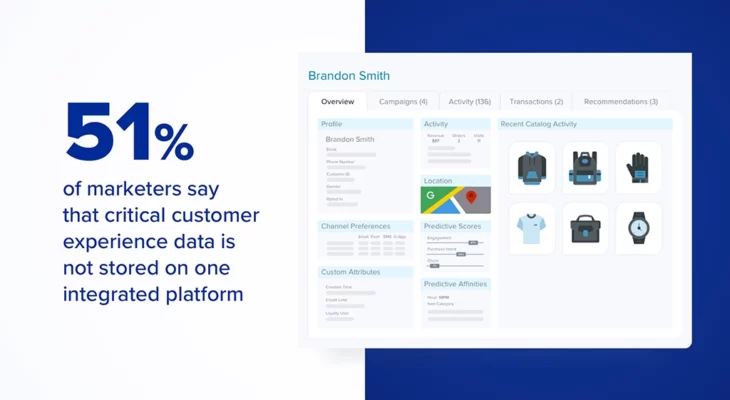Before coming to Blueshift to serve as Chief Growth Officer, I’ve seen success throughout my career during economically challenging times. In 2008 during the Great Recession and 2010 when a volcanic eruption halted air travel, I led a marketing team at Priceline — it’s extremely trying to market when vacations are the last thing on people’s minds. In early 2016, I was CMO and General Manager of a travel start-up specific to Mexico and the Caribbean, just as the Zika Virus rocked Central and South America. And finally, in late 2016 as mortgage rates hit a historic low, I was the VP of Marketing at LendingTree. Through all of these experiences, I noticed a pattern: the marketing teams that have succeeded in times of uncertainty have 4 main strategies they turn to. The first such strategy revolves around unifying and leveraging all available first-party data.
4 Ways to Increase ROI During Economic Uncertainty, Part 1: Using Customer Data

TAP INTO EXISTING, HIGH-VALUE CUSTOMERS HIDDEN IN YOUR DATA
In times where businesses are looking to cut extraneous costs and programs acquisition efforts are often the first to be cut back. That’s a sound decision — capturing the interest and mindshare of new customers is more costly and time-consuming than messaging existing customers. But, if you’re not gaining new customers or users, how can you still see growth and ROI?
The answer lies in your existing customer data. There’s no need to purchase lists or spend money on paid campaigns when there’s a ton of “hidden” value in data you already own. The key is figuring out how to get the most out of it. Data activation is the process by which your customer experiences are guided by the fullness of all your customer data. This means more personalized accurate communication at the right moment, for the right customers.
But, most businesses aren’t there yet — 51% of marketers aren’t storing critical customer data in one, integrated platform. Before you can take action on your customer data and activate it, you’ll need to have a clean foundation. This comes from collecting and unifying all of your different customer databases from your CRM to transactional databases, to customer service databases. Essentially, if it has anything to do with your users, you want it accounted for within your foundational database. Customer Data Platforms are the most common piece of technology that marketers are using to get a holistic view of customers — they ingest data from any source a team provides and turn the disparate databases into Single Customer Views.
This can be a daunting prospect to do all at once, so I recommend starting out with your business’ most essential data: demographic, transactional, and activity or behavioral data to really see an impact. In my recent webinar I mentioned something I often tell my kids (but it applies here too), “You don’t need to eat the entire cake to know it takes good.” Similarly, small steps during times of stress can make a lasting impact on your business.
THE ROI IMPACT OF DATA UNIFICATION AND LEVERAGE
The marketers that are able to work off of unified data see a significant revenue lift because of their ability to act faster and more precisely. Additionally, customers are more likely to spend greater amounts with a brand if they provide those personalized experiences that can only be attainable with the right data foundations. More than half of marketers that are able to effectively use their customer data exceed their revenue goals by over 30%. Alternatively, 38% of marketers working off of fragmented disparate data systems missed their target revenue goals. In effect, disparate data is costing your business money.
In addition to increased revenue, unifying your customer data also allows marketers to use AI in a way they’ve never been able to before. AI and machine learning can show fantastic ROI, but they’re essentially useless if they don’t have the right information feeding into the system. With all your customer data in one place, it’s easier than ever to route it through AI tools to gain valuable customer insights.
In the next installment of my series, How to Increase ROI During Economic Uncertainty, I’ll walk you through exactly how to implement AI within your martech stack for success. If you’d like to learn more about how your current martech might be weighing you down, download our report: Marketer vs. Martech. Or, if you’d like to see the Blueshift platform in action and unify, activate, and leverage your customer data, book a demo with our team members.


